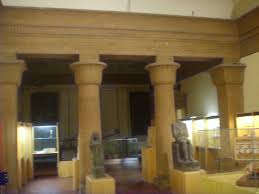There are four major Italian museums where Egyptian materials are collected. The Egyptian Museum of Turin collects the material first unified to the classic; therefore, the Egyptian material had its autonomous place in 1940. Most of it comes from excavations of the mission conducted in Egypt by Professor Ernesto Schiaparelli around 1903-1920. Among the most prestigious works, we remember the statues of the Pharaoh Tutmosi I (18th dynasty, which corresponds to the so-called New Kingdom, a period of considerable development of trade relations and political power of Egypt), Amenofi II (18th Dynasty) and the very famous black granite of Ramses II (19th dynasty). Interesting are the numerous Papyrus, among which stands the Royal Papyrus with the list of the Kings of Fta , the creator of the world, attributable to the 17th dynasty (the expulsion of the Hyksos [1570-1560 B.C.]). The Papyrus was the matter most used in Egypt up from the Old Kingdom.
At the Vatican Museums in Rome, the Egyptian Museum was inaugurated by Pope Gregory XVI in 1839, and it had as Director the illustrious Barnabite monk L.M. Ungarelli, who was a pupil of Champollion, the famous scholar who deciphered the Rosetta Stone. The Museum contains some sculptures, among which stands out the statue of Queen Tewe, wife of Set I and mother of Ramses II (19th dynasty.) (Ramses defeated the Hittites at the battle of Kadesh [1296 B.C.]). Interesting and unique is a sepulchral Stone of Iri, who was a supervisor of the pyramid of Kheops (IV dynasty, 2600-2450 B.C. The period corresponds to the construction of the pyramids: Khufu, Chefren, Mikerino.) In the Vatican Museums there is also an important collection of Papyrus, almost all funeral, containing some texts of the so-called Book of Dead .
One of the most important Egyptian Museums in Italy is located in Florence (The Archaeological Museum). The Egyptian material collected here comes almost entirely from excavations carried out by Ippolito Rossellini in Egypt in 1828, subsidized by the Duke Leopold II of Tuscany. The Museum contains sarcophagi, sculptures, imprinted and painted stones, some mummies and other significant objects of goldsmith’s art. Unique is the Pink Granite statue representing the Hathor Cow which nursing the Pharaoh Haremhab (18th Dynasty), and also there is a beautiful wooden little statue representing a female slave milling the grain.
At the Civic Museum in Bologna, there is a significant and important collection of Egyptian material; many sepulchral stones, some relieves of the tomb of Pharaoh Horemhab (18th Dynasty), wooden sarcophagi, mummies and various objects of daily use.